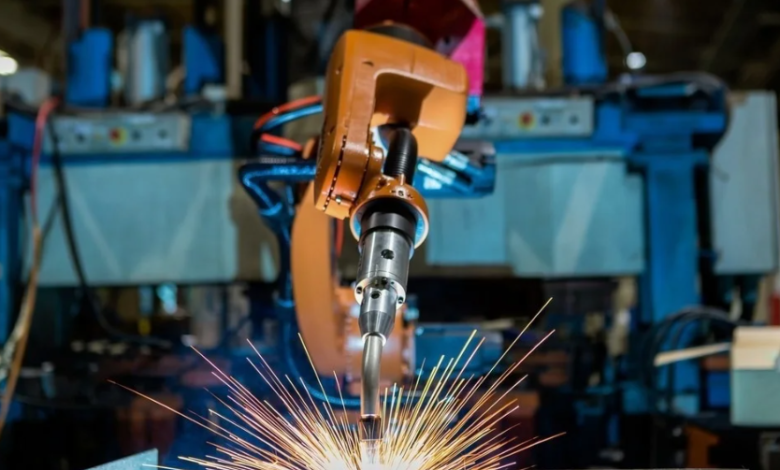Is a Robotic Welding Machine Worth the Cost? ROI Insights for Manufacturers

Robotic welding machine offer significant advantages over manual welding, including greater precision, lower labor costs, enhanced safety, and more consistent production. Their return on investment (ROI) stems from savings on labor, reduced material waste, minimized downtime, increased production capacity, and improved weld quality, all of which help manufacturers meet demand efficiently and maintain high customer satisfaction.
This article explores the many ways robotic welding machines deliver ROI, giving manufacturers a clear and comprehensive understanding to make informed investment decisions.
What is a Robotic Welding Machine?
A robotic welding machine is an automated system that uses programmable robotic arms to perform welding tasks with high precision. These machines handle repetitive welding operations, ensuring consistent quality while reducing human error. They are widely used in manufacturing where accuracy and high-volume production are critical.
How Robotic Welding Works
Robotic welding machines operate by following pre-set instructions that control the movement of the robotic arm, the welding parameters, and the positioning of the workpieces. Here’s how the main components function:
Robotic Arm:
Moves the welding torch along the programmed path with precision and accuracy.
Welding Torch or Electrode Holder: Performs the actual welding, delivering heat and filler material as needed.
Control Unit:
Manages the entire welding process, ensuring the arm and torch follow the correct path and parameters.
Optional Machine Vision:
Advanced robotic welding systems can be equipped with cameras and sensors that detect the position and orientation of parts, automatically adjusting the welding path to ensure precise and consistent welds every time.
Robotic welding machines are transforming manufacturing by automating complex, repetitive welding tasks with precision and efficiency. They outperform manual and semi-automated welding, especially in high-volume production, delivering higher productivity, better quality, improved safety, and long-term cost savings.
See also: Innovative Packaging Technologies for Staying Ahead of the Curve
Benefits of Robotic Welding Machines
Robotic welding machines boost manufacturing speed, safety, and efficiency, making them increasingly popular across industries.
Better Weld Quality and Consistency
Robotic welders follow precise, pre-programmed paths, maintaining consistent speed, torch angle, and heat input. This level of control ensures every weld is uniform, reducing errors, defects, and the need for rework. Consistent weld quality not only improves the strength and durability of products but also enhances customer satisfaction and reduces costs associated with material scrap and warranty claims.
Higher Productivity and Faster Production
Robotic welders can work around without getting tired. They often weld faster than human workers while staying accurate, which increases production and helps meet tight deadlines. This continuous operation allows manufacturers to produce more efficiently without needing additional labor.
Less Material Waste
Robotic welding machines are very accurate. They use only the needed amount of welding material and avoid extra welding, which cuts down on waste. This saves money and helps the environment by using fewer raw materials.
Safer Work Environment
Welding can expose workers to hazards such as extreme heat, bright sparks, toxic fumes, and ultraviolet light. Robotic systems take over these dangerous tasks, significantly reducing the risk of workplace injuries. This not only protects employees but also decreases downtime and costs related to accidents or health issues.
Lower Labor Costs
Automating repetitive welding tasks means companies don’t need as many skilled welders, saving money and addressing labor shortages. Workers can then focus on more important tasks like quality control or maintenance, making the workforce more efficient and reducing overall labor costs.
Robotic welding machines enhance manufacturing by delivering consistent, high-quality welds, increasing production speed, reducing material waste, improving workplace safety, and lowering labor costs. These benefits make robotic welding machines a wise investment for manufacturers aiming to improve efficiency, reduce costs, and remain competitive in today’s market.
Understanding the ROI of Robotic Welding
The return on investment (ROI) of robotic welding measures the benefits a company gains compared to the cost of implementing the system. Robotic welding provides ROI through several key factors:
- Labor Savings – Robots can work continuously without fatigue, reducing the need for manual labor and allowing skilled workers to focus on more complex tasks.
- Reduced Material Waste – Robotic welding systems work with high precision, producing consistent welds every time. This reduces overuse of materials, cuts down on scrap, and lowers the cost of consumables.
- Minimized Downtime – Robotic welding systems can work continuously across multiple shifts without fatigue. They can also be quickly reprogrammed for different tasks, keeping production running smoothly and reducing periods when machines are idle.
- Increased Production Capacity – Robots work faster than humans, boosting throughput and enabling manufacturers to meet higher demand efficiently.
- Improved Weld Quality – Consistent and precise welds reduce defects, rework, and warranty claims, improving customer satisfaction.
Investing in robotic welding machines provides a measurable ROI by saving labor, reducing waste, increasing production, and delivering high-quality welds. Over time, these benefits often outweigh the initial cost, making robotic welding a strategic choice for manufacturers.
Key Factors Affecting ROI
When assessing the return on investment (ROI) for robotic welding systems, several factors influence how effective and profitable the investment will be:
Production Volume and Demand
High-Volume Production: Robotic welders excel in environments with consistent, large-scale production. They can operate continuously without fatigue, significantly increasing output and reducing production time. For example, automated systems often achieve arc-on times above 80%, compared to just 20–30% for manual welders.
Variable Demand: Industries with changing production needs can benefit from flexible systems like collaborative robots (cobots). These robots can handle different batch sizes and complex parts, making them ideal for both large-scale and small-batch production.
Industry Type
Automotive & Aerospace: These sectors benefit from precise, consistent welds that meet strict quality and regulatory standards.
Heavy Machinery & Construction: Robotic welding systems can handle large, heavy parts safely, reducing the need for manual labor and lowering the risk of workplace injuries.
Electronics & Consumer Goods: Robots provide precise, repeatable welds, ensuring high-quality results even for small or delicate parts.
Maintenance and Servicing
Operational Costs: Robots save money on labor, but they need regular maintenance to keep them working properly and prevent costly breakdowns or production delays.
Training & Support: Well-trained operators and maintenance staff can perform routine care and troubleshoot issues, reducing dependence on external service providers.
Workforce Readiness
Skill Development: Workers need training on how to operate and program robots so the system runs efficiently.
Cultural Shift: Encouraging a workplace mindset that accepts automation and values ongoing improvement helps employees adapt smoothly to new technology, making robotic systems more effective and improving overall performance.
Maximizing ROI from robotic welding requires careful consideration of production volume, industry requirements, maintenance strategies, and workforce readiness. When these factors are aligned, manufacturers can fully leverage automation to improve efficiency, quality, and profitability.






